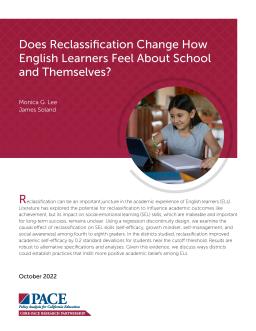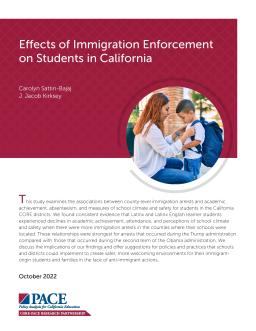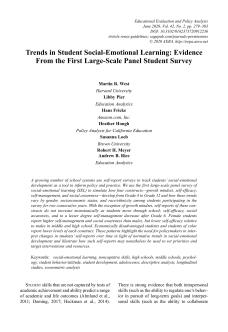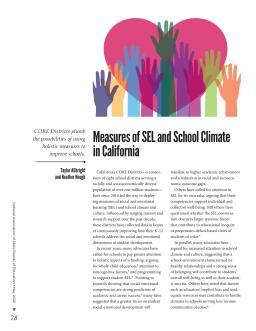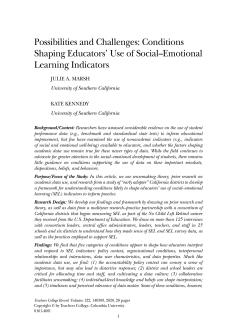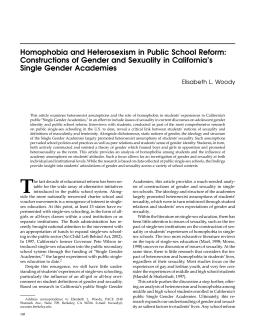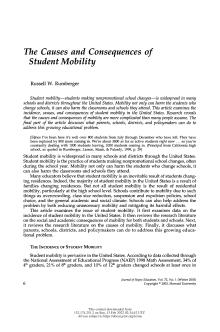Published
Summary
This study explores the impact of reclassification on social-emotional learning skills (SEL) of English learners (ELs) in grades 4 to 8. Using a regression discontinuity design, the study found that reclassification improved academic self-efficacy by 0.2 standard deviations for students near the cutoff threshold. The results suggest that reclassification can positively influence the academic beliefs of ELs and the authors provide recommendations for districts to create practices that foster such positive beliefs.
Published
Summary
This study explores the impact of county-level immigration arrests on the academic achievement, attendance, and perceptions of school climate and safety for Latinx and Latinx English learner students in California's CORE districts. The research found that there is a negative relationship between immigration arrests and these students' academic performance and school experiences. The study recommends policies and practices that can help schools and districts create safer, more welcoming environments for immigrant-origin students and families in the face of anti-immigrant actions.
Critical Actions for Recovery and the Role of Research in the Years Ahead
Published
Summary
IES issued a report on the future of education research at the National Centers for Education Research and Special Education Research. The report identifies issues, details new methods and research investments needed in the future. PACE produced a paper to synthesize existing evidence in the field and frame recommendations. Public input and outside experts were also consulted.
The Impact of Unmotivated Questionnaire Responding on Data Quality
Published
Summary
This article explores the issue of satisficing, which is suboptimal responding on surveys, in the context of a large-scale social-emotional learning survey administered to over 400,000 elementary and secondary students. Despite concerns about its impact on data quality, the study found that satisficing had a more modest effect than expected. The article offers an approach for defining and calculating satisficing for researchers, practitioners, and policymakers to improve the quality of survey data.
Published
Summary
This article assesses confusion due to negative wording on social-emotional learning (SEL) assessments using mixture IRT models. Results based on student self-reports show confusion biasing scores, especially in Grades 3-5, and correlational relationships between SEL constructs and reading proficiency and ELL status. Using positively oriented items in future SEL measures is recommended to address these issues.
Evidence From the First Large-Scale Panel Student Survey
Published
Summary
Self-report surveys are used to track students’ social-emotional development. This large-scale panel survey reveals that self-efficacy, social awareness, and self-management decrease after Grade 6, except for growth mindset. Female students report higher self-management and social awareness but lower self-efficacy than males in middle and high school. Students of color and economically disadvantaged students report lower levels of each construct. Policymakers should consider these trends and use self-reports to target interventions and resources.
Published
Summary
California's CORE districts have been collecting data since 2014 on social and emotional learning (SEL) and school climate and culture to improve K-12 schools' holistic approach to student development. Advocates argue that a focus on SEL and school culture will lead to higher academic achievement and better well-being for students. The CORE districts developed survey instruments for SEL competencies and school climate perceptions involving students, staff, and parents. Many states and districts have adopted SEL-specific curricula and disciplinary reforms.
Conditions Shaping Educators’ Use of Social-Emotional Learning Indicators
Published
Summary
This article explores the use of nonacademic indicators such as social and emotional well-being in educational improvement. The authors suggest that while there is little guidance on using these indicators, understanding the conditions that shape the use of academic data can help develop a framework for using social-emotional learning (SEL) indicators to inform practice. The article draws from sensemaking theory and research from a study of early adopter districts in California to develop this framework.
School Finance and Governance in California
Published
Summary
Getting Down to Facts is an extensive investigation of CA's public education system commissioned by a bipartisan group of CA leaders. The project aimed to describe California's school finance and governance systems, identify obstacles hindering resource utilization, and estimate costs to achieve student outcome goals. The project resulted in 23 reports by scholars, which highlight that the current school finance and governance systems fail to help students achieve state performance goals, particularly those from low-income families. The reports provide a framework for assessing reform options.
Constructions of Gender and Sexuality in California’s Single Gender Academies
Published
Summary
This article examines the impact of heterosexist assumptions and homophobia on students' experiences in California's public "Single Gender Academies." Interviews with students reveal a critical link between sexuality, masculinity, and femininity, and the ways in which assumptions about sexuality are embedded in school policies, practices, and peer relations. The article provides an analysis of homophobia among students and the influence of academy assumptions on students' attitudes towards gender and sexuality.
Published
Summary
This paper examines the incidence, causes, and consequences of student mobility in the US. Mobility not only harms the students who change schools, but also the classrooms and schools they attend. The causes and consequences of mobility are more complicated than many people assume. The authors suggest ways for parents, schools, districts, and policymakers to address this growing educational problem.
